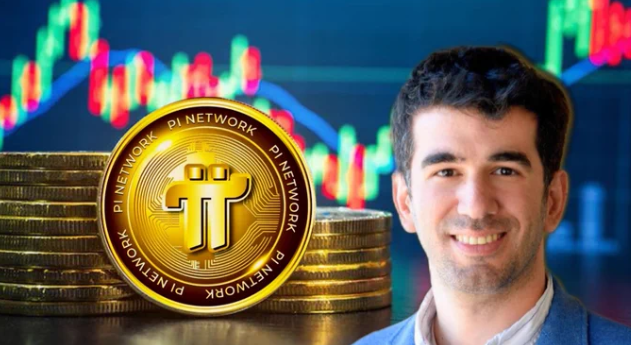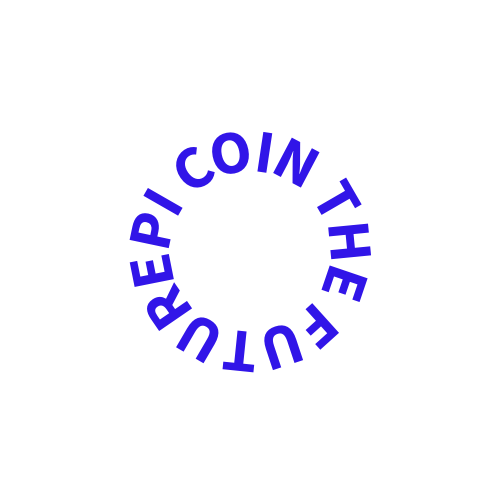The History of Pi Network: Revolutionizing Cryptocurrency Mining

The History of Pi Network is a fascinating journey into the evolution of a cryptocurrency designed for mass adoption. Since its inception, Pi Network has challenged the status quo, making crypto mining accessible to everyone via mobile devices. Unlike traditional cryptocurrencies that require expensive hardware and technical know-how, Pi Network introduces a novel, eco-friendly approach to blockchain technology. This article explores the History of Pi Coin and how it has transformed the cryptocurrency landscape.
What is Pi Network?
Pi Network is a decentralized cryptocurrency project launched in 2019 by a group of Stanford graduates. The primary aim of the project is to enable people worldwide to mine cryptocurrency using their smartphones without consuming excessive energy. Unlike Bitcoin, which relies on the energy-intensive Proof-of-Work (PoW) model, Pi Network operates on a unique consensus mechanism known as the Stellar Consensus Protocol (SCP).
The Birth of Pi Network
Founders and Vision
Pi Network was created by three Stanford Ph.D. graduates: Dr. Nicolas Kokkalis, Dr. Chengdiao Fan, and Vincent McPhillip. Their vision was to develop a cryptocurrency that could be easily mined by everyday users without requiring specialized knowledge or hardware.
Whitepaper and Initial Development
The Pi Network whitepaper outlined the need for a more inclusive financial ecosystem. The project officially launched on March 14, 2019, coinciding with Pi Day (3/14), a symbolic representation of the mathematical constant π (Pi). This strategic launch date emphasized the project's focus on scalability and accessibility.
The Evolution of Pi Coin
Early Adoption Phase
Initially, Pi Network operated as a mobile app-based mining platform, where users (or "Pioneers") could earn Pi coins by simply pressing a mining button every 24 hours. This phase focused on building a robust community and increasing awareness.
Growth and Community Expansion
By the end of 2019, Pi Network had attracted over 1 million users. The community-driven approach allowed early adopters to invite friends and expand the network. This referral-based system helped Pi Network grow exponentially, reaching 10 million users by the end of 2020 and surpassing 35 million users in 2023.
Introduction of Pi Testnet
In 2020, the Pi Testnet was launched to facilitate blockchain testing and transactions among Pioneers. This phase was crucial in refining the network's infrastructure, ensuring a seamless transition to the Mainnet.
Pi Network Mainnet Launch
The Pi Network Mainnet was launched in two phases:
- Enclosed Mainnet (December 2021): Users could transact within the Pi ecosystem but could not move Pi coins outside the network.
- Open Mainnet (Expected 2024): Full decentralization will allow Pi Coin to be traded on exchanges and used for real-world transactions.
How Pi Network Works
Unlike Bitcoin and Ethereum, which require significant computing power, Pi Network utilizes a Proof-of-Stake (PoS) hybrid model where users mine coins by verifying transactions through their participation in the network. There are four types of roles within Pi Network:
- Pioneer: Regular users who mine Pi daily.
- Contributor: Users who add to network security.
- Ambassador: Users who invite others to join.
- Node Operator: Users who run Pi Nodes on their computers.
The Value and Future of Pi Coin
Current Status of Pi Coin
As of now, Pi Coin is not yet listed on major cryptocurrency exchanges due to its ongoing Enclosed Mainnet phase. However, once the Open Mainnet is launched, Pi Coin could become a significant player in the crypto market.
Future Predictions
Many experts believe that Pi Coin could gain substantial value, especially considering its vast user base and real-world applications. Businesses are already accepting Pi as a form of payment within the Pi ecosystem, and once the Open Mainnet goes live, it is expected to see increased adoption.
Challenges and Controversies
While Pi Network has achieved impressive milestones, it has also faced skepticism and criticisms, including:
- Delayed Open Mainnet: The postponement of full decentralization has raised concerns among users.
- Uncertain Value: Since Pi Coin is not yet tradable, its future market value remains speculative.
- Referral-based Growth Model: Some critics argue that the referral system resembles a multi-level marketing (MLM) scheme, though the project denies such claims.
Conclusion
The History of Pi Network is a testament to how innovation can reshape the cryptocurrency industry. By prioritizing accessibility, sustainability, and community-driven development, Pi Network has introduced a groundbreaking model for digital currency mining. While its full potential is yet to be realized, the project's rapid growth and ambitious roadmap suggest that Pi Coin could become a significant force in the crypto world.
Key Takeaways
- Pi Network was launched in 2019 by Stanford graduates to make crypto mining accessible.
- It operates on a mobile-friendly Stellar Consensus Protocol (SCP) instead of energy-intensive PoW.
- The Pi Testnet was launched in 2020, with the Enclosed Mainnet following in 2021.
- The Open Mainnet is expected in 2024, potentially allowing Pi Coin to be traded.
- Despite challenges, Pi Network continues to grow, with over 35 million users globally.
Final Thoughts
With an innovative approach and a dedicated global community, Pi Network stands at the forefront of the next wave of cryptocurrency evolution. Whether it will become the next big thing in digital finance remains to be seen, but its journey so far has been nothing short of revolutionary.
-

Where Can I Buy Pi Coin: A Complete Guide for Crypto Enthusiasts
As cryptocurrency continues to gain mainstream attention, many investors and crypto enthusiasts…
-

How to Sell Pi Coin: A Comprehensive Guide for Beginners
The rise of Pi Coin has captured the interest of crypto enthusiasts…
-

The History of Pi Network: Revolutionizing Cryptocurrency Mining
The History of Pi Network is a fascinating journey into the evolution…

Leave a Reply